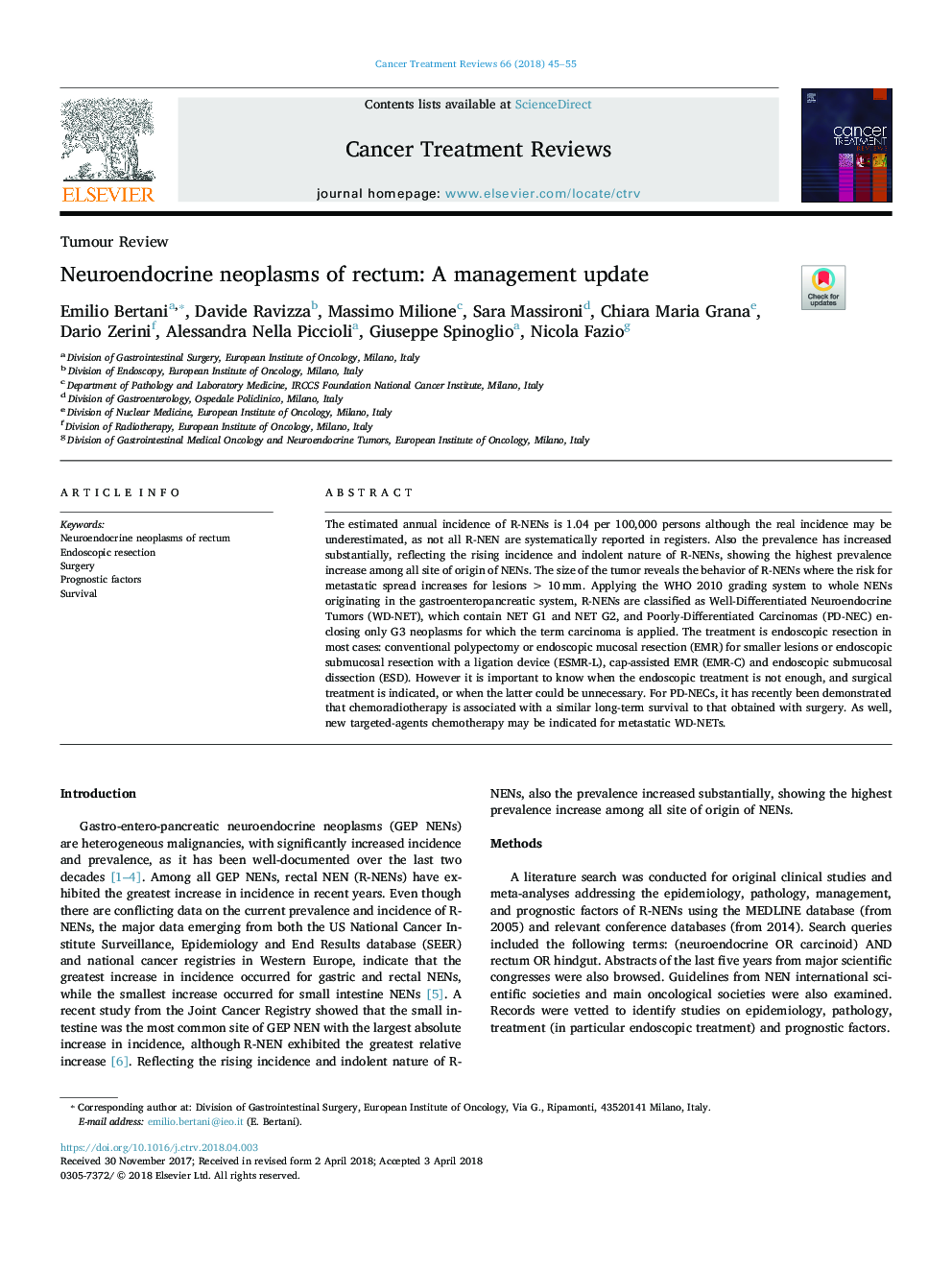| Article ID | Journal | Published Year | Pages | File Type |
|---|---|---|---|---|
| 8785863 | Cancer Treatment Reviews | 2018 | 11 Pages |
Abstract
The estimated annual incidence of R-NENs is 1.04 per 100,000 persons although the real incidence may be underestimated, as not all R-NEN are systematically reported in registers. Also the prevalence has increased substantially, reflecting the rising incidence and indolent nature of R-NENs, showing the highest prevalence increase among all site of origin of NENs. The size of the tumor reveals the behavior of R-NENs where the risk for metastatic spread increases for lesionsâ¯>â¯10â¯mm. Applying the WHO 2010 grading system to whole NENs originating in the gastroenteropancreatic system, R-NENs are classified as Well-Differentiated Neuroendocrine Tumors (WD-NET), which contain NET G1 and NET G2, and Poorly-Differentiated Carcinomas (PD-NEC) enclosing only G3 neoplasms for which the term carcinoma is applied. The treatment is endoscopic resection in most cases: conventional polypectomy or endoscopic mucosal resection (EMR) for smaller lesions or endoscopic submucosal resection with a ligation device (ESMR-L), cap-assisted EMR (EMR-C) and endoscopic submucosal dissection (ESD). However it is important to know when the endoscopic treatment is not enough, and surgical treatment is indicated, or when the latter could be unnecessary. For PD-NECs, it has recently been demonstrated that chemoradiotherapy is associated with a similar long-term survival to that obtained with surgery. As well, new targeted-agents chemotherapy may be indicated for metastatic WD-NETs.
Related Topics
Health Sciences
Medicine and Dentistry
Oncology
Authors
Emilio Bertani, Davide Ravizza, Massimo Milione, Sara Massironi, Chiara Maria Grana, Dario Zerini, Alessandra Nella Piccioli, Giuseppe Spinoglio, Nicola Fazio,
